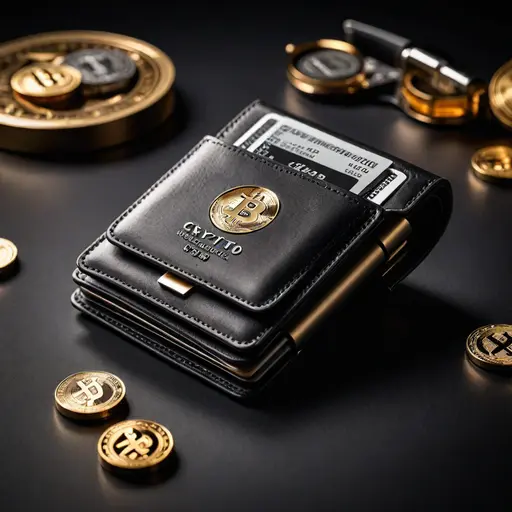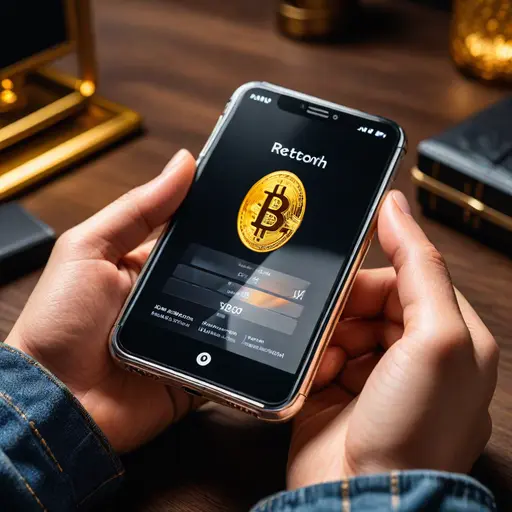
The emergence of cryptocurrency has transformed our perception of money, granting both individuals and enterprises unparalleled autonomy over their financial resources. Yet, with such empowerment comes significant accountability. Given the decentralized structure of digital currencies, users bear full responsibility for safeguarding their holdings. Consequently, mastering the art of securely storing and managing crypto becomes indispensable for anyone aiming to engage in this modern digital economy.
How Crypto Wallets Work?
At the heart of every crypto transaction lies the wallet —a digital tool that allows users to store, send, and receive cryptocurrency. Understanding how these wallets function is crucial for anyone looking to manage their crypto securely.
What Is a Crypto Wallet?
A crypto wallet is far more than just a storage tool; it’s a sophisticated system designed to interact with blockchain networks, facilitating seamless transactions. Unlike conventional wallets that physically hold cash, crypto wallets don’t actually contain your digital coins. Instead, they safeguard private keys—unique cryptographic codes that provide access to your cryptocurrency stored on the blockchain.
Every wallet comprises two essential elements:
Public Key: Think of this as your bank account number. It serves as the address you share with others to receive cryptocurrency.
Private Key: This functions as your password or digital signature. It authorizes outgoing transactions and must remain confidential at all times to ensure the security of your assets.
When you initiate a transaction, your wallet employs your private key to create a digital signature. This signature serves as proof that you are the legitimate owner of the funds being sent. Once the transaction is signed, it is transmitted to the blockchain network, where miners or validators verify its authenticity before recording it on the distributed ledger.
Grasping this mechanism emphasizes the critical need to protect your private keys. If an unauthorized individual gains access to these keys, they can siphon off your cryptocurrency with no possibility of recovery. This reality reinforces the vital importance of meticulous wallet management in safeguarding your digital assets.
What Are the Causes of Crypto Theft?
Despite advancements in security systems, crypto theft remains a significant concern. Hackers and scammers continually develop new tactics to exploit vulnerabilities in both wallets and user behavior. Below, we’ll examine the most common causes of crypto theft and how they occur.
- Phishing Attacks
Phishing is one of the most prevalent methods used to steal crypto. Scammers create fake websites or emails that mimic legitimate platforms, tricking users into revealing their private keys or login credentials. For example, a phishing email might appear to come from your exchange or wallet provider, urging you to click a malicious link. - Malware and Ransomware
Malicious software designed to infiltrate devices can compromise wallet security. Keyloggers, for instance, record keystrokes to capture private keys, while ransomware encrypts files and demands payment in crypto for their release. Using infected devices to manage your wallet increases the risk of theft. - Weak Passwords and Poor Authentication
Many users underestimate the importance of strong passwords and multifactor authentication (MFA). Simple passwords or lack of MFA make it easier for attackers to gain unauthorized access to accounts and steal crypto. - Exchange Hacks
Centralized exchanges act as custodians of users’ funds, making them attractive targets for hackers. High-profile breaches have resulted in millions of dollars’ worth of crypto being stolen. When using exchanges, it’s vital to transfer funds to a personal wallet for added security. - Social Engineering
Scammers often exploit human psychology through social engineering tactics. They may impersonate support staff, friends, or colleagues to manipulate victims into divulging sensitive information or sending crypto directly to fraudulent addresses. - Lost or Damaged Wallets
Physical damage or loss of hardware wallets and paper wallets can result in permanent loss of access to funds. Without backups or recovery phrases, retrieving lost crypto becomes impossible.
By understanding these causes, users can take proactive steps to mitigate risks and protect their investments.

Best Security Practices for Your Crypto Wallets
To ensure the safety of your cryptocurrency, it’s crucial to implement strong security measures. Below, we’ll detail the most effective strategies for safeguarding your wallet and preserving the long-term security of your investments.
- Opt for Hardware Wallets for Secure Long-Term Storage
Hardware wallets are often hailed as the pinnacle of crypto protection. By keeping private keys offline, they render online attacks virtually impossible. Leading brands like Ledger and Trezor provide intuitive interfaces alongside cutting-edge encryption technologies, making them a reliable choice for secure storage. - Activate Multi-Factor Authentication (MFA)
MFA introduces an additional barrier to unauthorized access by requiring supplementary verification steps beyond just a password. Whether through SMS codes, authentication apps, or biometric scans, this method drastically diminishes the chances of a security breach. - Maintain Updated Software
Consistently updating your wallet software ensures you’re equipped with the latest security enhancements and bug fixes. Outdated software can harbor weaknesses that malicious actors may exploit, leaving your assets vulnerable. - Create a Secure Backup of Your Wallet
Always generate a backup of your wallet, including your private keys and recovery phrase. Store this data in multiple secure locations, such as encrypted USB drives or physical safes. Avoid saving backups on cloud platforms, as these can be targeted by hackers seeking to compromise your funds. - Be Cautious of Public Wi-Fi
Using public Wi-Fi networks exposes your device to potential threats. Always use a virtual private network (VPN) when accessing your wallet remotely to encrypt your connection and prevent eavesdropping. - Verify URLs and Emails
Before entering sensitive information, double-check URLs and sender addresses to ensure they’re legitimate. Phishing attempts often rely on subtle misspellings or deceptive designs to deceive users. - Diversify Storage Methods
Don’t keep all your crypto in a single wallet. Spread your holdings across multiple wallets to minimize risk. For example, use a hardware wallet for long-term storage and a hot wallet for daily transactions. - Educate Yourself About Scams
Stay informed about common scams and red flags. Never share your private keys or recovery phrases, even if someone claims to be from customer support. Legitimate organizations will never ask for this information. - Test Small Transactions First
When sending crypto to a new address, start with a small test transaction to confirm everything works correctly. This prevents accidental losses caused by typos or technical errors. - Monitor Activity Regularly
Keep track of your wallet’s activity to detect suspicious behavior early. Many wallets provide notifications for incoming and outgoing transactions, helping you stay vigilant. - Consider Insurance Options
Some platforms offer insurance policies for crypto stored in their custody. While not foolproof, these policies can provide peace of mind in case of unforeseen events.
By following these best practices, you can significantly reduce the risk of losing your crypto and enjoy greater peace of mind.
As you can see, the world of crypto offers unparalleled opportunities for financial freedom and innovation. However, with these opportunities comes the responsibility of safeguarding your assets. By understanding how crypto wallets work, recognizing the causes of crypto theft, and implementing robust security practices, you can protect your investments and navigate the digital economy with confidence.
Whether you’re a seasoned investor or a newcomer to the space, prioritizing security should always be your top priority. Platforms like DNS-PAY are committed to providing safe and reliable payment solutions that empower users to transact securely in the global marketplace. With cutting-edge technology and a focus on user protection, DNS-PAY ensures that your crypto transactions remain seamless and secure.